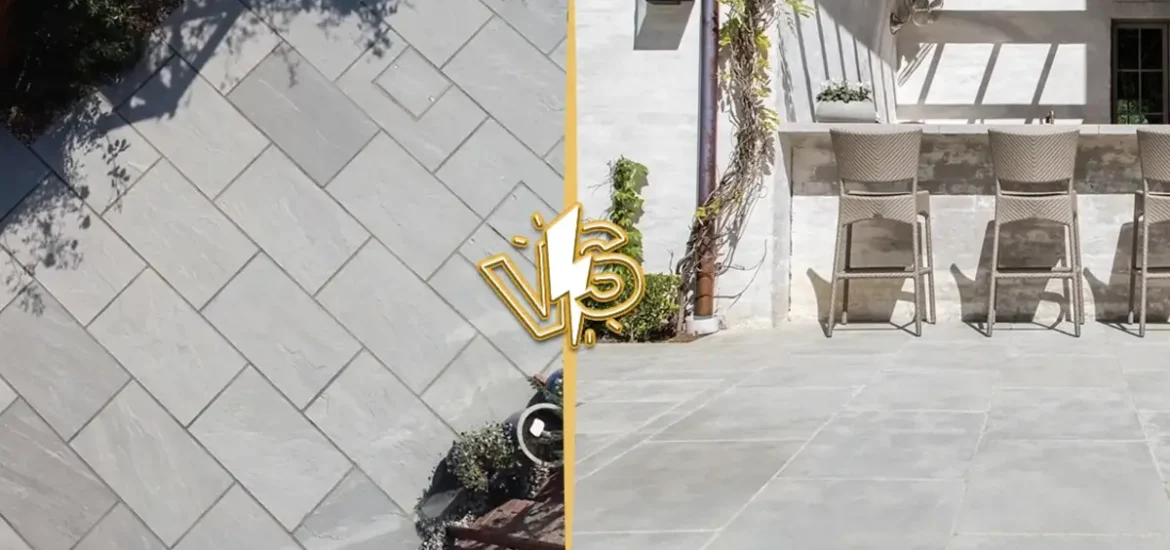Non-slip outdoor pavers are a popular choice for homeowners and landscapers who want to create safe and attractive outdoor spaces. These pavers are designed to provide traction underfoot, reducing the risk of slips and falls, especially in wet conditions. They are made from natural stones or other materials that have textured surfaces to enhance grip. In areas like Australia, where weather can vary from rainy to sunny, non-slip pavers are essential for patios, poolsides, and driveways. Companies like Stone Pavers Australia offer a wide range of these products, ensuring durability and style.
This article explores what makes these pavers special, their types, benefits, and more, helping you make an informed decision for your outdoor projects.
Benefits of Using Non-Slip Outdoor Pavers
Enhanced Safety Features
One of the main advantages of non-slip outdoor pavers is their ability to prevent accidents. These pavers have surfaces that are rough or textured, which helps in maintaining grip even when water is present. For families with children or elderly members, this feature is crucial around swimming pools or pathways that get wet from rain or sprinklers. Unlike smooth tiles, non-slip pavers reduce the chance of slipping, making outdoor areas safer for everyone.
In addition, they comply with safety standards in many regions, giving peace of mind to property owners. By choosing these pavers, you invest in long-term safety without compromising on aesthetics.
Durability and Weather Resistance
Non-slip outdoor pavers are built to withstand harsh weather conditions. Made from natural stones, they resist fading, cracking, and erosion caused by sun, rain, or frost. This durability means they last longer than regular concrete or wooden options, saving money on replacements over time. For instance, in coastal areas with high humidity, these pavers hold up well against salt and moisture.
Their weather-resistant nature also makes them low-maintenance, as they do not require frequent sealing or treatments. Overall, this combination of strength and resilience makes them a smart choice for outdoor flooring that endures year after year.
Aesthetic Appeal and Versatility
Beyond functionality, non-slip outdoor pavers add beauty to any landscape. Available in various colors, patterns, and textures, they can match different home styles, from modern to rustic. You can create unique designs like French patterns or rectangular layouts to enhance visual interest. Their versatility allows use in multiple areas, blending seamlessly with gardens, pools, or driveways.
This aesthetic flexibility means you do not have to sacrifice style for safety. Homeowners often find that these pavers increase property value by improving curb appeal and creating inviting outdoor spaces.
Types of Non-Slip Outdoor Pavers
Bluestone Pavers
Bluestone pavers are a top choice for non-slip outdoor applications due to their natural texture and strength. Sourced from volcanic rock, they have a slightly rough surface that provides excellent grip, making them ideal for wet areas. Bluestone comes in shades of blue-gray, adding a sophisticated look to patios or pathways. These pavers are highly durable, resisting wear from foot traffic and weather changes.
They are often used in French pattern layouts, where different sizes create an elegant, interlocking design. With proper installation, bluestone pavers can last decades, offering both safety and timeless appeal for outdoor spaces.
Travertine Pavers
Travertine pavers offer a luxurious feel with their non-slip properties derived from natural pores and textures. Formed from mineral deposits, they have a pitted surface that enhances traction, perfect for pool surrounds or garden paths. Available in earthy tones like beige and ivory, travertine blends well with natural landscapes. It is also heat-resistant, staying cool underfoot in hot climates.
Despite its elegant appearance, travertine is tough against elements like rain and UV rays. This type of paver is versatile for various shapes, including rectangular or irregular forms, allowing creative designs in outdoor areas.
Sandstone Pavers
Sandstone pavers are known for their warm colors and inherent non-slip texture from grainy surfaces. Composed of compressed sand particles, they provide reliable grip in slippery conditions, suitable for driveways and stepping stones. Sandstone varies in hues from red to yellow, adding vibrancy to backyards or front yards. It is naturally weather-resistant, handling temperature fluctuations without cracking.
Popular for pool pavers, sandstone maintains its integrity around water. Its affordability and ease of cutting make it a practical option for large projects, ensuring safety and style in equal measure.
Limestone Pavers
Limestone pavers feature a soft, matte finish that naturally resists slipping, thanks to their subtle texture. Derived from sedimentary rock, they offer a light, neutral palette that brightens outdoor spaces. Ideal for patios and pathways, limestone is durable against moisture and heat, preventing wear over time. It absorbs less heat than darker stones, making it comfortable for barefoot walking.
Limestone works well in French patterns or as crazy paving for irregular layouts. Its eco-friendly sourcing and long lifespan make it a sustainable choice for non-slip outdoor flooring.
Granite and Other Varieties
Granite pavers stand out for their extreme hardness and non-slip flecked surface, providing superior traction. This igneous rock resists scratches and stains, making it perfect for high-traffic areas like driveways. Other varieties include marble, slate, and flagstone, each with unique textures for grip. Marble offers elegance with veined patterns, while slate provides a rugged feel for gardens.
Flagstone’s irregular shapes create natural, non-slip paths. These options expand choices for homeowners, ensuring there’s a type to fit any budget or design preference in outdoor settings.
Where to Install Non-Slip Outdoor Pavers
Around Swimming Pools
Installing non-slip pavers around swimming pools is essential for safety, as water splashes can create hazardous surfaces. These pavers prevent slips with their textured finish, protecting swimmers of all ages. Areas near pools benefit from materials like sandstone or travertine, which handle constant moisture without degrading. Proper placement ensures seamless transitions from pool edges to lounging areas.
This setup not only enhances safety but also creates a resort-like atmosphere. Homeowners in regions with frequent rain appreciate how these pavers maintain grip, reducing accident risks during pool parties or daily use.
Patios and Outdoor Living Areas
Patios are ideal spots for non-slip outdoor pavers, transforming them into safe extensions of indoor spaces. The pavers’ durability supports furniture and foot traffic, while their non-slip nature handles spills or dew. Bluestone or limestone adds a cozy feel for dining or relaxing areas. Installation here allows for creative patterns, like French style, to define zones.
These spaces become year-round usable, even in wet weather, promoting outdoor living. The combination of safety and aesthetics makes patios more enjoyable for gatherings.
Driveways and Pathways
Driveways require robust non-slip pavers to withstand vehicle weight and provide safe walking. Granite or cobblestone options offer the needed strength and grip, preventing slips on inclines. Pathways in gardens or front yards benefit from stepping stones made from rectangular pavers, guiding visitors safely.
These installations improve accessibility, especially in rainy seasons. The weather-resistant properties ensure longevity, minimizing repairs. Overall, they enhance property functionality and curb appeal.
Gardens and Stepping Stones
In gardens, non-slip pavers create secure paths through greenery, using irregular shapes for a natural look. Stepping stones from square or round pavers allow safe navigation without damaging plants. Materials like slate or flagstone blend with landscapes, offering traction on uneven terrain.
This setup encourages exploration while preventing mud tracking. Gardens become more user-friendly, suitable for all weather conditions.
How to Install Non-Slip Outdoor Pavers
Preparing the Site
The first step in installing non-slip outdoor pavers is site preparation, which ensures a stable foundation. Begin by clearing the area of debris, vegetation, and old materials using tools like shovels and rakes. Measure the space accurately to determine paver quantities, adding 10% extra for cuts. Excavate to a depth of about 150-200mm, depending on soil type and intended use. For driveways, go deeper for added strength. Level the ground with a tamper or plate compactor to create a flat base. Install edge restraints like concrete borders to prevent shifting. Add a layer of geotextile fabric to stop weed growth and improve drainage.
This preparation phase is critical, as poor groundwork can lead to uneven surfaces or cracking later. Taking time here, typically 1-2 days for small areas, sets the stage for a professional finish. Always check local regulations for any permits needed before starting.
Laying the Base Layer
Next, lay the base layer to support the pavers and promote drainage. Spread crushed gravel or road base material evenly over the excavated area, aiming for 100-150mm thickness. Use a rake to distribute it uniformly, then compact it in layers using a plate compactor for solidity. Wet the base slightly during compaction to bind particles. Slope the base gently away from buildings, about 1:50 ratio, to direct water runoff.
This step prevents pooling, which could compromise non-slip properties. For larger projects, consider hiring equipment for efficiency. The base layer’s quality directly affects the pavers’ longevity, so compact until no further settling occurs. This process usually takes several hours, ensuring the surface is firm enough to walk on without indentations.
Placing the Pavers
Once the base is ready, start placing the pavers according to your design. Begin at one corner or edge, laying them in the chosen pattern, such as French or rectangular. Use a string line for straight alignment. Space pavers with 2-5mm joints for sand filling, adjusting for curves if needed. Cut pavers with a wet saw for edges or obstacles.
Tap each paver into place with a rubber mallet to level them, checking with a spirit level frequently. For non-slip varieties, ensure textured sides face up. Work in sections to avoid walking on unset areas. This step requires patience, often spanning 1-3 days for average patios, but results in a secure, grippy surface.
Filling Joints and Finishing
After placement, fill joints with fine sand or polymeric sand using a broom to sweep it in. Compact the entire surface again to settle the sand. For polymeric sand, activate with water per instructions to create a binding effect. Clean excess material off pavers immediately to avoid staining. Seal the pavers if recommended for the material, enhancing non-slip qualities and protection. Allow 24-48 hours for setting before heavy use.
This final step locks everything in place, ensuring stability and weather resistance. Proper finishing extends the installation’s life, making it safe and attractive.
Maintenance Tips for Non-Slip Outdoor Pavers
Regular Cleaning Methods
To keep non-slip outdoor pavers in top condition, regular cleaning is key. Sweep away leaves and dirt weekly with a broom to prevent buildup. For deeper cleans, use a pressure washer on low settings every few months, avoiding high pressure that could erode textures. Mix mild soap with water for stubborn stains, scrubbing gently with a soft brush. Rinse thoroughly to remove residues. In pool areas, clean more often to handle chlorine or salt.
This routine maintains the non-slip surface, preventing moss or algae growth in damp climates. Consistent care, taking about 30 minutes per session, preserves appearance and safety.
Sealing and Protection
Sealing non-slip pavers protects against weathering and enhances grip. Apply a penetrating sealer every 1-2 years, following product guidelines. Clean the surface first, then use a roller or sprayer for even coverage.
Allow drying time as specified. Sealing resists stains from oils or spills, common in driveways. For natural stones, choose breathable sealers to avoid moisture trapping. This process, done in dry weather, extends paver life and maintains their non-slip properties effectively.
Repairing Common Issues
Address repairs promptly to sustain non-slip features. For loose pavers, remove and recompact the base, then reset with fresh sand. Replace cracked ones matching the original material. Weed removal from joints uses vinegar solutions or manual pulling.
In winter, avoid salt de-icers that damage stones; use sand instead. Regular inspections spot issues early, preventing major fixes. Simple repairs keep outdoor areas safe and functional year-round.
Conclusion
Non-slip outdoor pavers provide essential safety, durability, and style for various applications, making them a worthwhile investment for any home. Choosing the right type, like bluestone or travertine, depends on your specific needs, location, and aesthetic preferences. Proper installation and maintenance ensure long-lasting performance, reducing risks and enhancing outdoor enjoyment.


